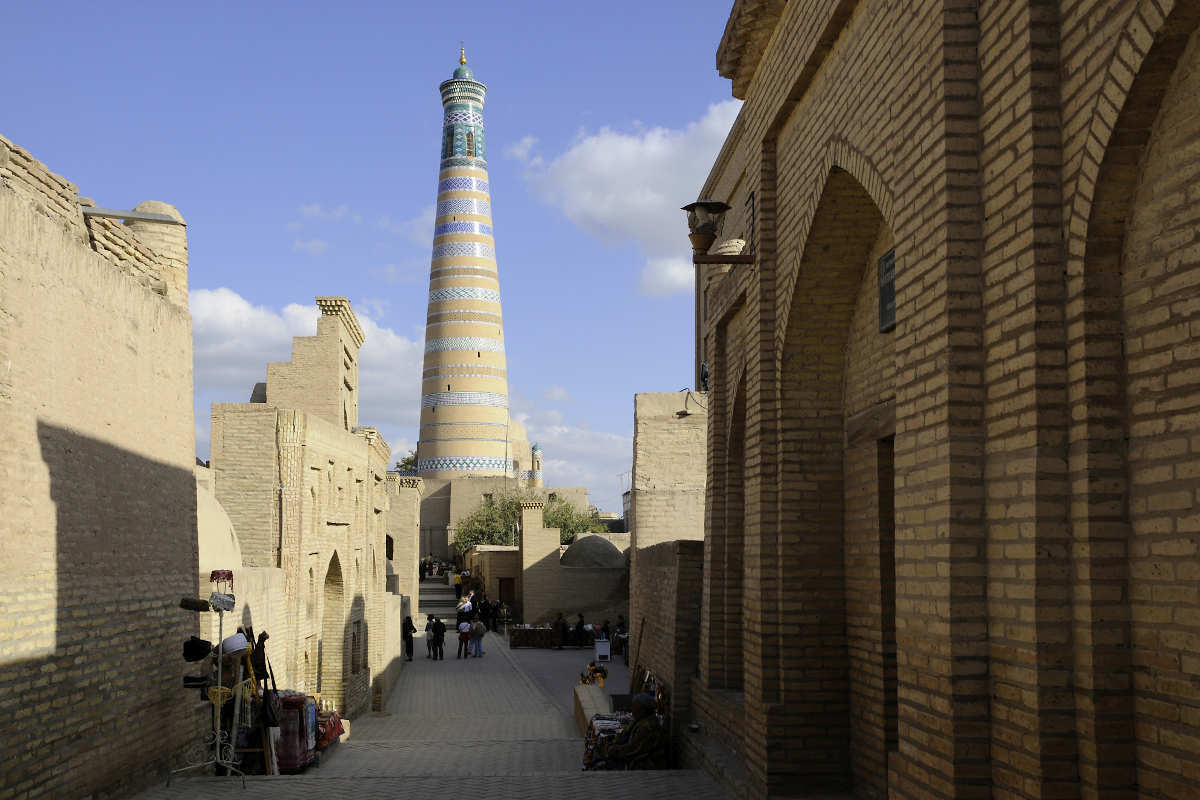Khiva - Islam Khoja Minaret
The Islam Khoja Minaret in Khiva was built in 1908. The entire complex was completed in 1910. The builder of this complex, the vizier Islam Khoja, was an educated and progressive-minded personality.
From west to east, from the Ata Darwaza Gate to the Palvan Darvaza Gate, the city is crossed by a main street about 400 metres long. It is flanked by the façades and side walls of large buildings.

Along its axis are several squares with minarets rising into the sky. In the span of the Koy Darwaza Gate, their entire chain is captured: Abdal Bobo, Palvan Qori, Sayyid Shelkarbiy, Islam Khoja, Juma, Kalta Minor, Bikajanbika.
From these minarets of historical Khiva, the muazzins simultaneously called the faithful to perform a sacred duty – to perform a prayer.
The Islam Khoja Minaret is called the symbol of Khiva and its upward narrowing shape goes back to the early patterns of architecture (Kunya-Urgench, XIV century). Brick masonry alternates with strips of glazed patterns on the minaret. The minaret is 56.6 metres high and 9.5 metres in diameter.
The fate of Islam Khoja, the founder of the madrasa and minaret, was tragic. Unlike most of the Khan’s dignitaries, Isfandiyar-Khan’s father-in-law and the head vizier of the Khanate was an educated and far-sighted man.
Islam Khoja was a repeated visitor to Petersburg, he took an interest in events in the Russian Empire, he understood the need to implement the reforms that time dictated in the Khanate.
He encouraged the development of trade, business and cultural relations with Russia and supported the development of domestic industry. At his insistence, a cotton cleaning factory, hospital, pharmacy, post office and telegraph were built in Khiva; projects were considered to build a railway linking the Khanate of Khiva with Russia.
At the expense of Islam Khoja, the first European-style school was built in the khanate, where mathematics, physics, chemistry and other scientific and humanitarian subjects were taught.
The clergy and the reactionary-minded nobility were hostile to Islam Khoja’s policies and received all his innovations with hostility. Eventually, they managed to win Isfandiyar-khan over to their side. They convinced him that Islam Khoja was a threat to the Khan’s autocracy.
The chief vizier’s fate was sealed. One night, as Islam Khoja was returning to his country estate in a carriage, several unknown men stabbed him and disappeared. However, no one wanted to look for them. The Khan knew about the murder and did not interfere.
